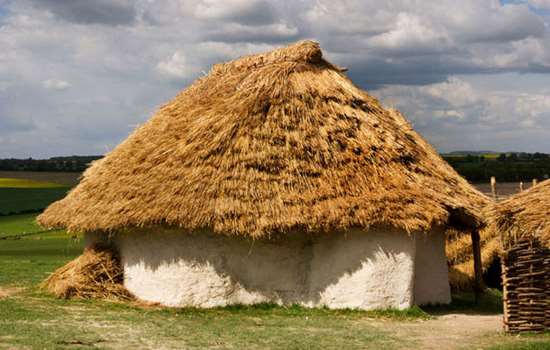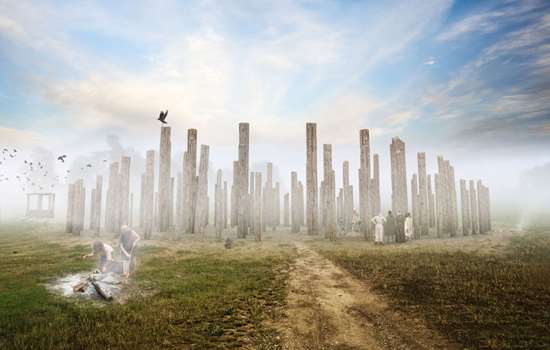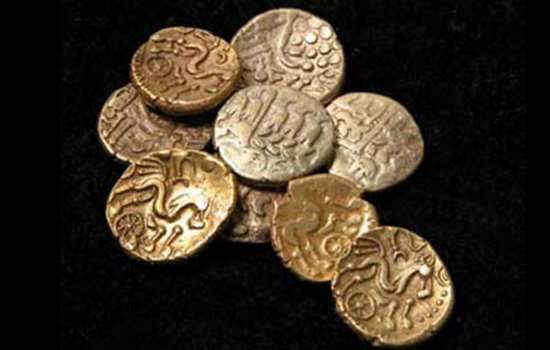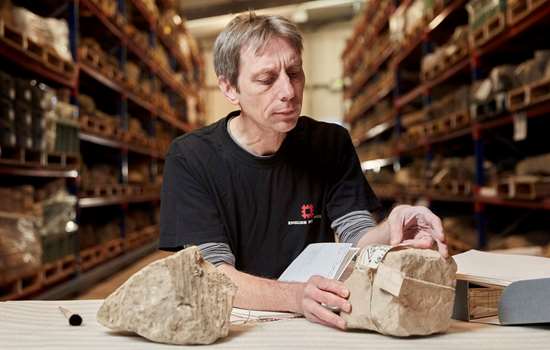Hints and Tips
- Break it down – Prehistory covers a very long period of time and can be difficult for young children to understand. Break the era down into specific ages (Stone Age, Bronze Age, Iron Age) and create a timeline to help learners understand how things changed with the developments in the use of materials as well as things that continued.
- Use real examples – Life during the prehistoric period was very different to anything that we’ve experienced ourselves, and it can be difficult for learners to relate to. Use examples of real prehistoric sites and objects to help them visualise what life was like and relate it to their experiences as much as possible.
- Get hands-on – Deepen your understanding by taking part in interactive activities themed around prehistory. Build your own roundhouse, create a scale model of Stonehenge or do some more research into other prehistoric sites.
Suggested activities
-

Biscuit Henge (KS1-KS2) - Stonehenge Teachers' Kit
Want to build Stonehenge? This activity will help you build your own Biscuit Henge.
-

Build a Prehistoric Roundhouse (KS2-KS3) - Beeston Castle Teachers' Kit
This activity invites you to build your own Bronze Age roundhouse, just like the replica at Beeston Castle and Woodland Park.
-

Small-Scale Stonehenge (KS3) - Stonehenge Teachers' Kit
Could you be a Stonehenge engineer? Use this activity to help you build an accurate small-scale model of Stonehenge’s final phase.
-

Video Research (KS1-KS2) - Stonehenge Teachers' Kit
Try this video research activity to discover how prehistoric people built their monuments and lived their daily lives.
-

Stonehenge: Stand or Fall? Game
Can you raise Stonehenge or will it fall? Try building Stonehenge with this interactive game.
-

Stonehenge Education Film
Watch this introduction to Stonehenge made by students from Wiltshire College in partnership with English Heritage.
History At Home Live! Stonehenge and Summer Solstice
Watch History at Home Live! with Ben Shires and our expert Susan Greaney as they explore what the summer solstice is and why it's such an important time at Stonehenge.
What is the summer solstice? How does Stonehenge align with the sun? How might prehistoric people have used the monument? Find out the answers to these questions and much more.
Get to grips with the period
The prehistoric period was vast – it’s generally understood to be the time before history was recorded. In the British Isles, that’s the time before the Romans arrived in AD 43. The earliest known humans came to England nearly a million years ago, but Paleolithic and Mesolithic nomadic hunter-gatherer lifestyles left little evidence behind in the landscape that we can still see today.
With the introduction of farming in the Neolithic (New Stone Age) period (c.4000–2300 BC) people began to build monuments. Some of these still exist in England today. Among the earliest are sacred places like Windmill Hill and tombs like West Kennet Long Barrow.
Stonehenge was begun around 3000 BC at a time when circular earthwork henges were beginning to be built. The later Neolithic period saw the building of large stone circles like Castlerigg Stone Circle and Avebury Stone Circle. Grime's Graves flint mines were being used by 2600 BC, but soon afterwards people learned to make copper and gold jewellery and tools, with bronze replacing them for tools from about 2200 BC.
With the arrival of new metal goods and religious beliefs at the the start of the Bronze Age, people began to bury their dead in round barrows like the examples at Winterbourne Poor Lot Barrows and Flowerdown Barrows. From the middle Bronze Age, people began to divide the landscape up by great fieldsystems, with dwellings grouped in villages like Grimspound or the houses at Beeston Castle.
From about 800 BC, in the Iron Age, these became enormous hillforts, like Old Owestry Hillfort and Maiden Castle. By this time people were making tools and weapons from iron. At the end of the Iron Age, when contacts with the Roman world were growing, emerging towns like Stanwick and Lexden were defended with earthworks.
Read our introduction to Prehistoric England-

Prehistoric Daily Life
The arrival of farming from about 4000 BC had a profound effect on every aspect of daily life for the people who lived in the British Isles.
-

Prehistoric Architecture
The structures that survive from prehistory might not be what we’d normally think of as ‘architecture’. But these structures still inspire awe today
-

Prehistoric Art
People in prehistory were skilled at making tools and decorative objects from stone and metal, sometimes with astonishing decoration.
-

Prehistoric Commerce
Goods and skills must have been bartered or exchanged in prehistoric Britain from early times, but very little evidence has survived and commece as we think of it may not have existed.
Expert Advice
We asked one of our historians for their advice on teaching prehistory:
Read more about Teaching HistoryTeaching prehistory can feel a bit daunting. Questions like ‘what language did they speak?’, ‘what clothes did they wear?’, or even ‘where did they go to the toilet?’ are tricky to answer! Don’t worry - there are may things that even the experts don’t know. The best thing is to get the imagination going by investigating the evidence, the monuments and artefacts, that we do have.
Susan Greaney, Senior Properties Historian
Video resources
Discover more about prehistoric Britain with our variety of videos.
You can swot up on prehistoric monuments using our easy guide. Uncover the Neolithic period, learn how Stonehenge was built, meet a Neolithic flint miner and find out how people made stone axes, or cheese!
-
How to make a flint axe
-
How was Stonehenge built?
-
How to make Prehistoric Cheese
-
What Happened in the Neolithic?




